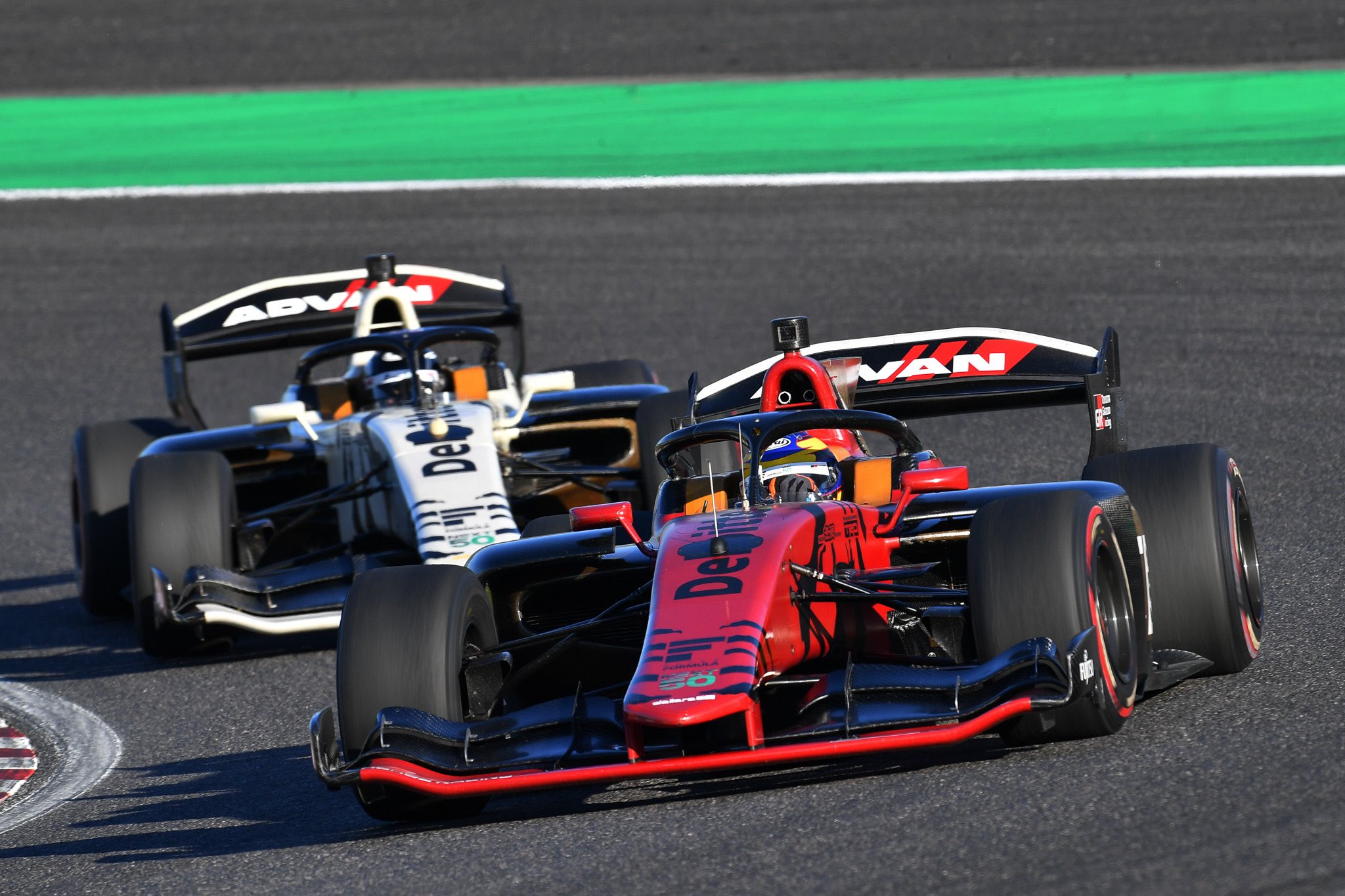Super Formula, Japan’s top-line single-seater series, has completed development of its innovative new spec chassis and confirmed it will be introduced in 2023.
Announced in October 2021, the joint development project between the series and its two engine suppliers Honda and Toyota has utilised several technologies that are new to top-level motorsport with the aim of having cars that are more sustainably manufactured and operated.Dubbed the ‘SF23’, the updated Dallara chassis will use new bodywork supplied by Swiss firm Bcomp that is made of a bio-composite material that maintains “the same rigidity and weight as the conventional carbon materials but focused completely on the application of natural substances such as hemp-derived materials,” according to the series.
By switching from carbon fibre to bio-composite, the reduction in CO2 emissions from manufacturing alone is said to be 75%. Following crashes when parts have to be replaced, this will also be a more sustainable method of providing spare components.
The bodywork is also being revised for 2023 to change the aerodynamic profile of the cars. This is being done with the goal of having close racing, and includes a radical reshaping of the front and rear wings and additional aerodynamic appendages on the sidepods.
Tyre supplier Yokohama has also worked on creating a more sustainable product. Its single-specification slick compounds will be made from “approximately 33% recycled and renewable raw materials” in 2023, it says. Yokohama claims it is its first “carbon neutral racing tyre”, which follows Super Formula’s ambition to become a carbon neutral series, a target shared by F1.
Over 10,000km of testing has been completed at multiple circuits in Japan with the new bodywork and tyres.
The technical overhaul for the series is accompanied by a revamped digital media approach that includes introducing an F1 TV-style live streaming and archive video service with features such as being able to listen to team radio and viewing live telemetry.
The full grid for Super Formula’s 2023 season has already been announced, with three rookies arriving in the series. Red Bull junior Liam Lawson will step up from Formula 2 to race for Team Mugen, Formula Regional Americas champion Raoul Hyman has landed a seat at B-MAX Racing thanks to a scholarship from Honda and Super Formula Lights runner-up Kakunoshin Ohta has been given a chance at Dandelion Racing.
Advert | Become a RaceFans supporter and
Other motorsport
- Pourchaire to make second IndyCar start for McLaren as Malukas’ absence continues
- Dixon sips fuel to win as Newgarden and Herta collide in his mirrors
- Toyota’s Kobayashi keeps his nerve to deny Porsche Penske Imola win
- Rosenqvist beats Penske pair at Long Beach to give Meyer Shank first pole
- Ferrari lock out top three grid positions for home round at Imola





S
13th December 2022, 10:45
Formula 1 – the pinnacle of motorsport and automotive innovation.
Oh wait… This isn’t F1.
Someone remind me – when was the last time F1 did something new and/or innovative? Or even deserving of the (assumed) title “pinnacle?”
Lancer033 (@lancer033)
13th December 2022, 12:38
well, by far the most efficient engines/power units ever made in history for starters. Also, those kinds of sustainable composites have been in F1 cars for a couple of years in limited applications. I think it was McLaren that was making their seats out of the stuff in 2020 or 2021.
anon
13th December 2022, 14:31
@lancer033 since you actually seem interested in learning more – yes, it appears that the product that is being used on the SF23 for some components is derived from the same bio-composite materials that McLaren have been using since 2020 (in the case of McLaren using it for the seats, that is specifically because it has benefits in terms of the dampening properties afforded by the type of fibres used).
For the SF23, the indication is that they are making limited use of this product for non-structural applications, with part of the engine cover and the side pods being constructed from this particular bio-composite. The usage of that bio-composite does seem to have been limited to just some of the exterior bodywork panels though – the SF23 is a lightly updated SF19, so most of the components, and the composite materials they were built from, are unchanged from the SF19.
Lancer033 (@lancer033)
13th December 2022, 18:34
@anon thank you, yes i was interested.
I do not think there is anything preventing and F1 team from using the same solution on their cars except that it would put them at a disadvantage to the other teams. With a spec series they can do something like this and even it it’s less than ideal it’s the same for everyone.
S
13th December 2022, 14:34
Efficiency that costs so much, even F1 can’t afford it…. What did it really achieve?
And as they’re moving to a lower density, more environmentally friendly fuel (which other series were doing decades ago) it couldn’t have been maintained anyway.
John Smith
13th December 2022, 11:45
Perfect.
Crash, the car burns, sit by the side, inhale, and all will be better.
KaIIe (@kaiie)
16th December 2022, 15:18
Just in case this was not sarcasm: the hemp fibre used in these cars does not have any THC content.
Joe McGuire (@treize131)
13th December 2022, 16:46
This is really cool work done by Super Formula.
Also exciting to hear about the revamped digital media programming.
NS Biker (@rekibsn)
13th December 2022, 20:08
The application of “organics” for body and chassis parts was pitched (or alluded to) by the FIA over a year ago if I recall. There were a few jibes about hemp and keeping folks away from a car fire.
Can just imagine the promo for Cheech and Chong replacement Body Panels.